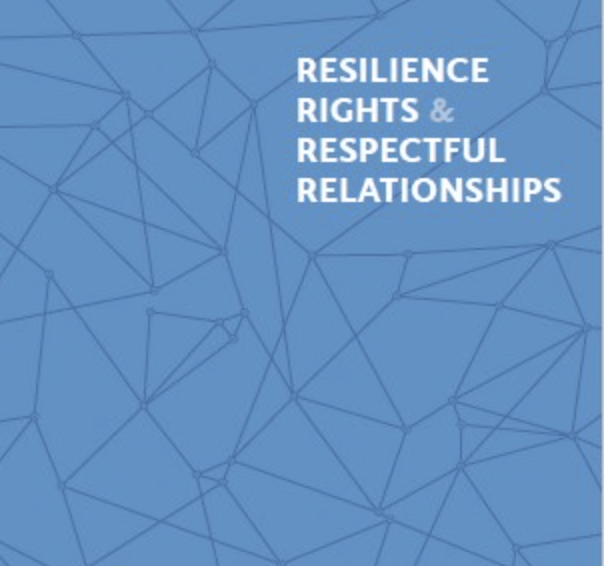
May 2021
By Hannah Hays,
masculinities in schooling researcher
With all the talk about consent and respect … or a lack of it … how can you promote positive masculinity in your classroom?
With current discussions and media attention focused on consent and respect in relationships it seems appropriate to also explore the issue of toxic masculinity and how schools can work with students to challenge problematic attitudes around gender. Many teachers and teaching staff are re-assessing their practice after the revelations of some students that came out through the Chanel Contos petition and campaign #TeachUsConsent.
What is toxic masculinity?
Toxic masculinity is characterised by harmful masculine practices of dominance, homophobia, compulsory heterosexuality and misogyny. Within education literature, toxic masculinity is often referred to as hegemonic masculinity. In 2005, Raewyn Connell and Tim Messerschmidt published an extensive discussion of the origins of hegemonic masculinity and how the theory has been applied within education, criminology, media and health to explain patterns of male behaviour. These patterns we applied to explain particular recurring behaviours such as apathy, toughness, aggression, risk-taking, strength and violence. The hegemonic pattern of practices that enable the domination of men over women, as well as other subordinate masculinities, is closely linked to the concept of toxic masculinity.
The ways toxic masculinity can play out in the classroom is not necessarily overt, and therefore can be difficult for teachers to identify and challenge. However, there are some practical strategies teachers can implement to promote positive masculinity.
Encouraging positive language and challenging problematic language.
Language is a powerful indicator of toxic masculinity in the classroom. It can be applied to both practical and theory classes but can be particularly dominant within sports. Language that establishes male dominance can be particularly problematic, reinforcing that females and “weak” males are subordinate or of lesser value. Examples of such language are:
- “throw like a girl” – Statements that compare a female’s attempt is inferior to males reinforces male superiority.
- “don’t be a pussy” – Sexualised statements that use female genitalia as an insult associate the female body with weakness, opposing the strength and toughness associated with toxic masculinity.
- “don’t be gay” – Reinforces compulsory heterosexuality and makes connotations that homosexual men are less masculine as a result of their sexual preference.
Classroom and sports organisation
Often in PE there are “boys sports” and “girls sports”, where aesthetic sports such as dance and gymnastics are seen as feminine whilst contact sports such as rugby are seen as masculine. Although safety considerations are important when planning a PE lesson, considerations should be made so that gender does not prevent participation and success. This could be done by:
- Highlighting the strength and power required for aesthetic sports can combat associations of weakness with femininity, whilst discussing the importance of teamwork, communication and mateship in contact sports can encourage positive masculinity.
- Allocating sports funding for both male and female sporting competitions. This can allow for equitable recognition of talent and encourage overall participation.
- Setting high expectations for all students regardless of gender within PE can reduce male focused lessons, particularly with mixed gendered classes. Setting tasks where all students have equal opportunities to succeed prevents instances of power imbalances between the genders.
- Selecting non-gendered activities within your PE program allows all students to feel included within the learning activities.
Include values within lessons.
Having a values focus in Health and PE lessons allows students to practice key life skills and encourages the development of positive characteristics such as empathy, compassion, care, and respect. These values counter the aspects of toxic masculinity, such as toughness and apathy which can prevent young men from feeling and expressing emotion in a healthy way.
These positive characteristics can also encourage a power balance between masculinity and femininity by removing the weak/strong dichotomy. It is important that emotional care, empathy and compassion are modelled by male and female teachers, showing these values are not exclusively feminine characteristics, but are associated with positive masculinity.
Resources to support the teaching of respectful relationships and consent

Talk Revolution
A series of 8 resources covering sex, sexuality, gender based violence, body image and eating disorders, periods, suicide and self harm, alcohol and drugs. Includes videos of kids talking about these issues in authentic, engaging and straight-to-the-point conversations. Includes accompanying teaching activities mapped to the NSW syllabus.

The Good Society
Look beyond the media headlines and take a look through this online learning platform. Over 350 curated video resources dealing with issues around consent, respect, power, coercion and the influences on behaviour. The platform allows you to allocate specific resources and activities for students to view either as a whole class or individually. Each topic includes learning goals mapped to the curriculum, an extensive playlist of videos with accompanying discussion questions and suggestions for follow up activities.

Resilience, rights and respectful relationships
These learning materials have been designed for teachers in primary and secondary schools to develop students' social, emotional and positive relationship skills. and reduce engagement in gender-related violence. The learning materials cover Emotional Literacy; Personal strengths; Positive Coping; Problem Solving; Stress Management; Help Seeking; Gender and Identity; and Positive Gender Relationships.
About the author – Hannah Hayes
Hannah completed an Honours Thesis in Masculinities in Secondary Schooling, for which she won the University of Sydney’s University Medal along with her First Class Honours Grade. She is currently living in Lancaster, England but keeping track of what is happening in Australia from afar.


